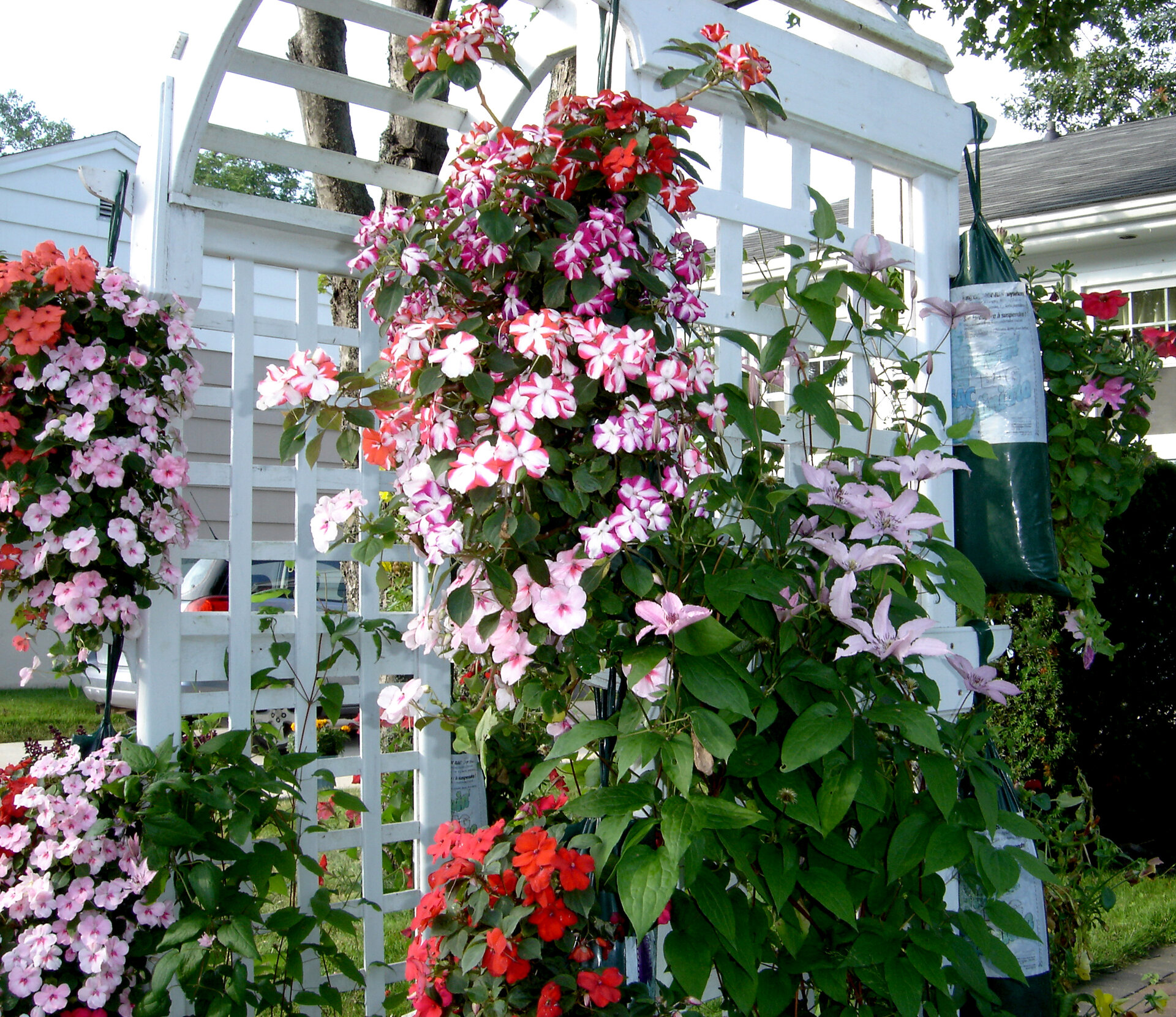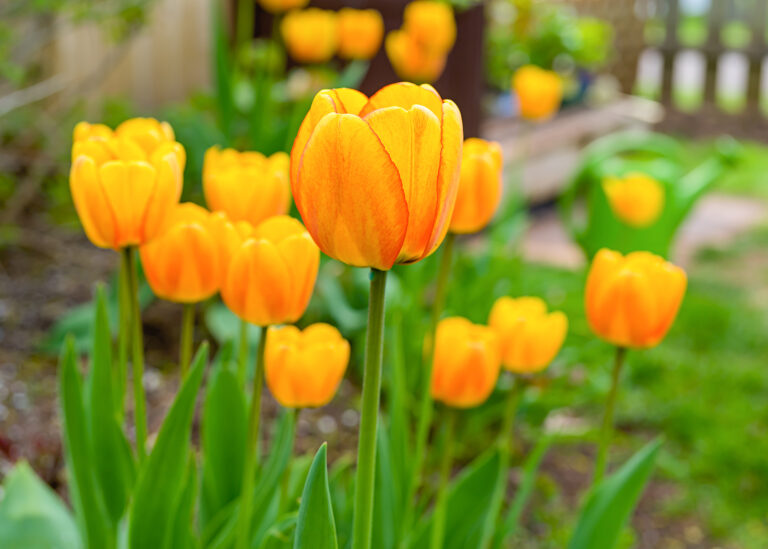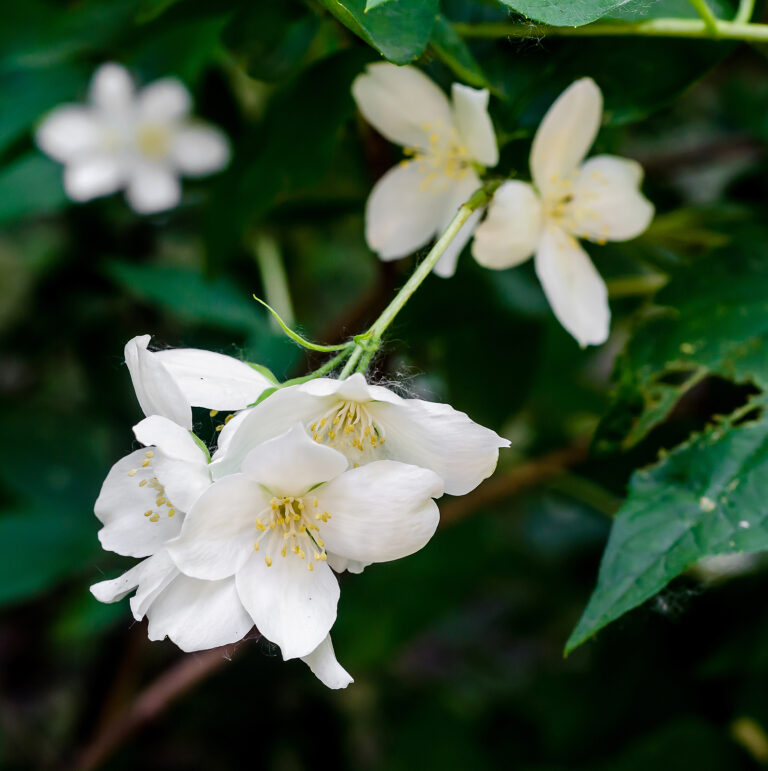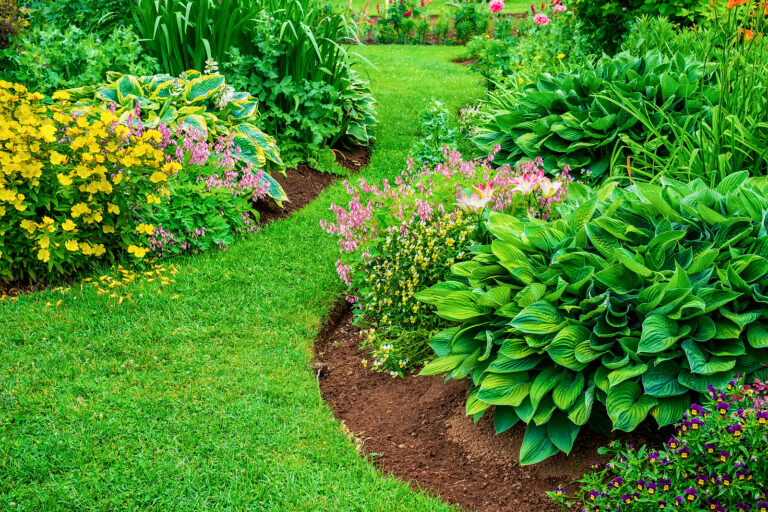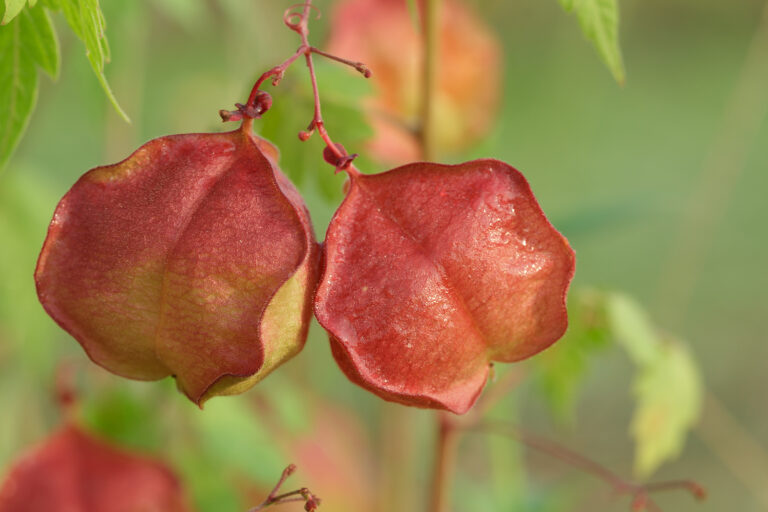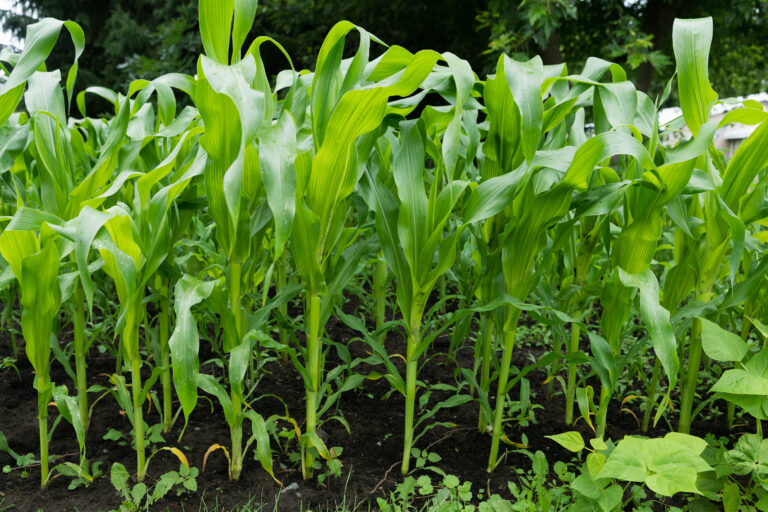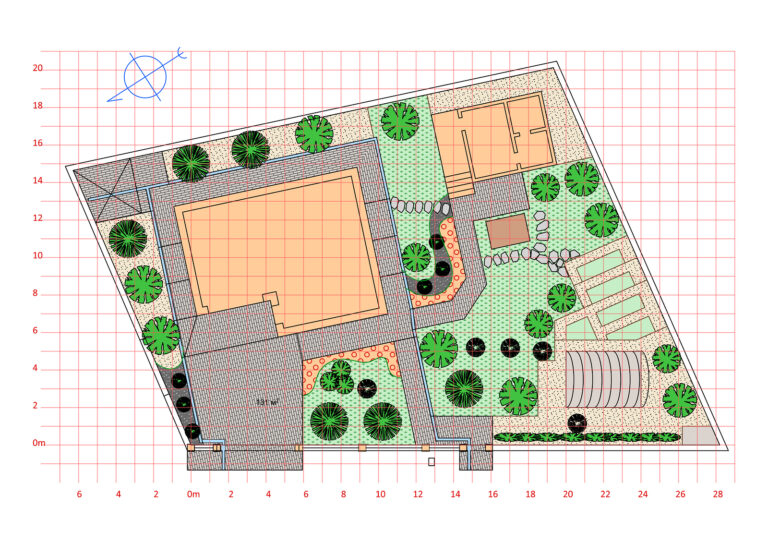Designing with Vines
Vines create tremendous vertical effects while using little horizontal space. They can be an asset to a garden’s color, texture, and form.
If a garden is small, with a lot of wall or other vertical space, vines become an important design element.
Vines can complement architecture or other hardscape in a garden or landscape.
Vines can soften hardscape or serve as a transition between a building or other built elements in the design and the planted landscape.
Vines can also hide hardscape such as fences or walls.
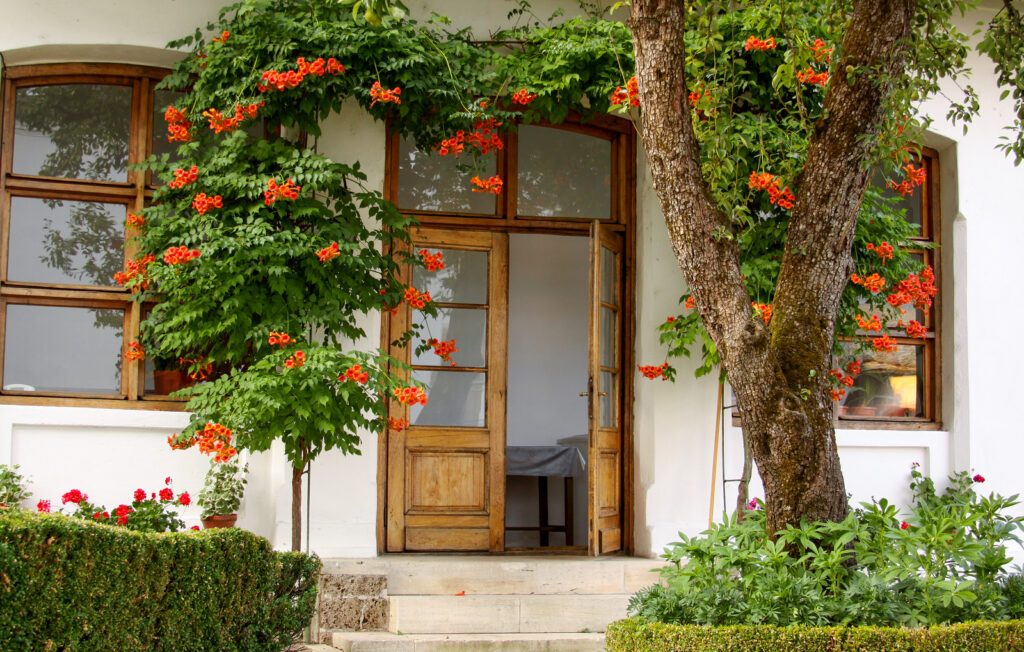
What vines can do
Here are a few reasons to use vines in a garden design:
- Vines can complement a building by adding texture and color.
- Vines can be used to frame a doorway or window.
- Vines can be used on an arbor to frame a garden entrance.
- Vines can provide shade when climbing up and over a pergola or overhead garden structure.
- Vines can soften, camouflage, or hide a fence or wall.
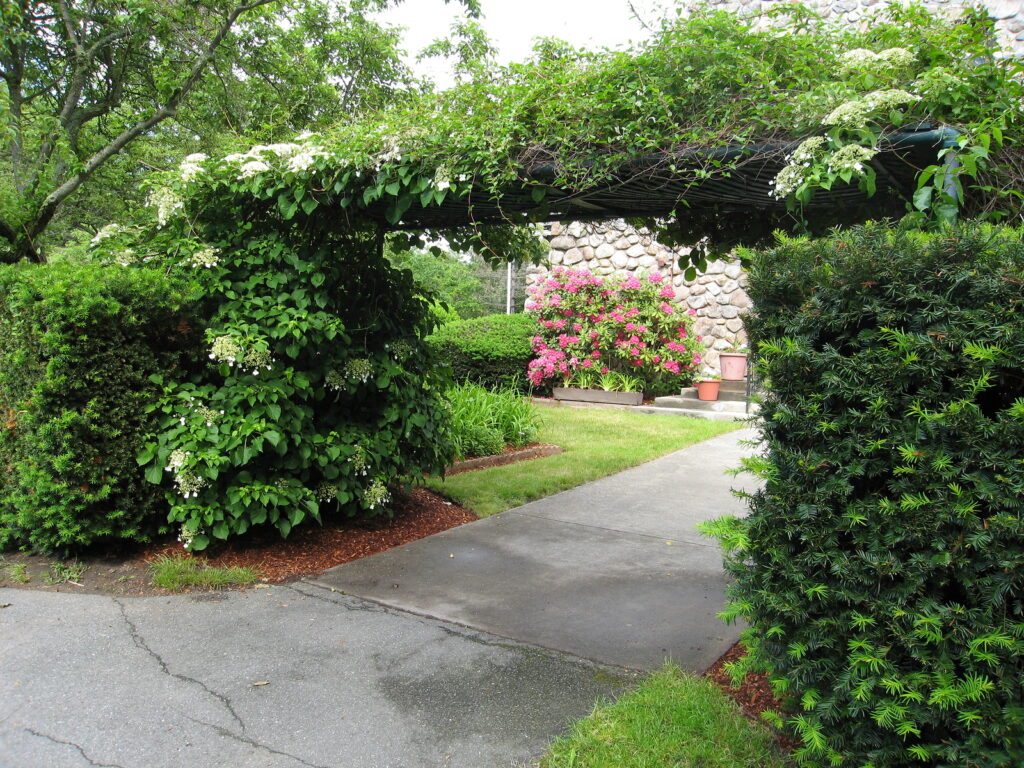
How to choose a vine
Here are some considerations when selecting a vine or climbing plant for your garden design:
- What color are the foliage and flowers? When does it flower?
- How tall does it grow? Some vines can grow to 30 feet or more.
- What kind of support does it need? Some vines become woody and heavy as they mature and require solid permanent support.
- Does the plant need sun or shade?
- Is the plant annual or perennial?
- Is the plant evergreen or deciduous? Can it survive cold winter temperatures where you live?
- What are the plant’s soil and water requirements?
- What is the plant’s climbing habit? Does it climb using tendrils that can wrap around a trellis or stake? Does the plant use stickfasts or aerial roots to attach itself to a wall? Stickfasts can be hard to remove when it comes time for painting.
- Will it reseed?
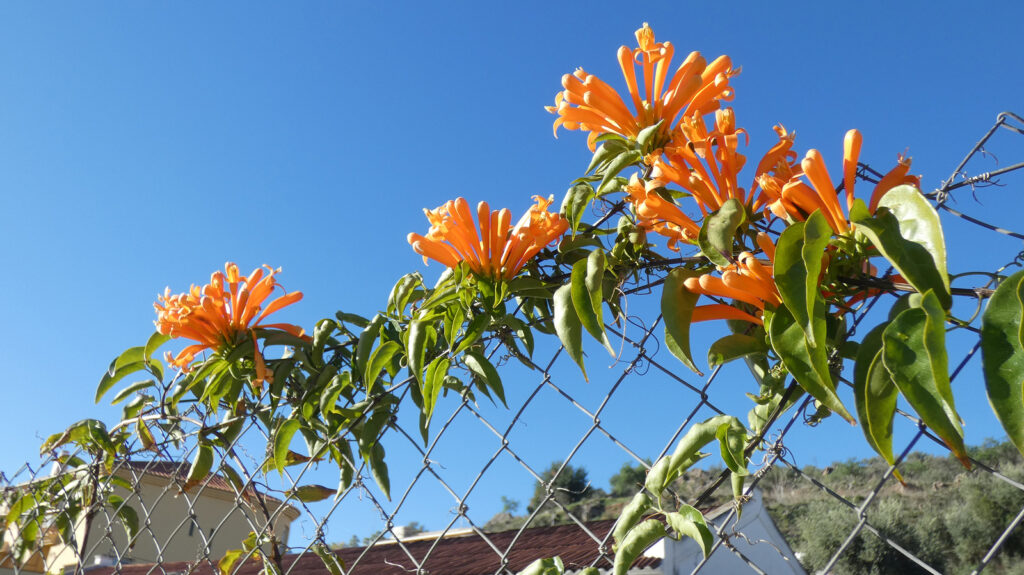
Vines for arbors and trellises
| Common Name | Botanical Name | Zones |
| Black-eyed Susan vine | Thunbergia alata | Annual |
| Chocolate vine | Akebia quinata | 5-9 |
| Clematis | Clematis spp. | 3-9 |
| Jessamine, Carolina | Gelsemium sempervirens | 7-9 |
| Morning glory | Ipomoea tricolor | Annual |
| Moonflower | Ipomoea alba | Annual |
| Passion flower | Passiflora spp. | 7-10 |
| Roses, climbing | Rosa spp. | Variety |
| Jasmine, star | Trachelospermum jasminoides | 8-10 |
| Sweet pea | Lathyrus odoratus | Annual |
| Trumpet honeysuckle | Lonicera sempervirens | 4-9 |
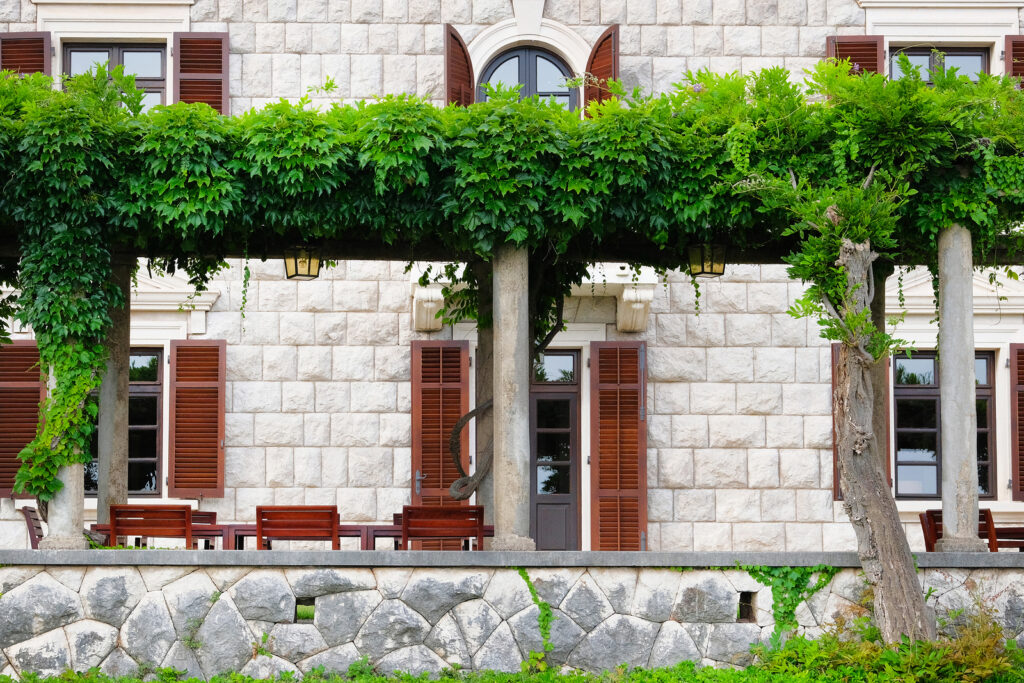
Vines by height
| Common Name | Botanical Name | Zone |
| Small (10 feet and under) | ||
| Black-eyed Susan vine | Thunbergia alata | To 10’ |
| Clematis, large flowered | Clematis spp. | To 10’ |
| Jasmine, star | Tracelospermum jasminoides | To 6’ |
| Nasturtium | Tropaeolum majus | To 10’ |
| Bean, scarlet runner | Phaseolus coccineus | To 10’ |
| Sweet pea | Lathyrus odoratus | To 8’ |
| Sweet potato vine | Ipomoea batatas | To 8’ |
| Medium (10-20 feet) | ||
| Cardinal climber | Ipomoea x sloteri | To 20’ |
| Carolina jasmine | Gelsemium sempervirens | To 20’ |
| Hyacinth bean | Lablab purpureus | To 20’ |
| Moonflower | Ipomoea alba | To 20’ |
| Morning glory | Ipomoea tricolor | To 20’ |
| Night blooming jasmine | Cestrum nocturnum | To 12’ |
| Pink Jasmine | Jasminum polyanthum | To 20’ |
| Roses, climbing | Rosa spp. | To 20’ |
| Star jasmine | Trachelospermum jasminoides | To 15’ |
| Tall (20 feet or more) | ||
| Bittersweet, American | Celastrus scandens | To 25’ |
| Euonymus, wintercreeper | Euonymus fortunei | To 40’ |
| Hydrangea, climbing | Hydrangea anomala | To 80’ |
| Ivy, English | Hedera helix | To 50’ |
| Firethorn | Pyracantha coccinea | To 15’ |
| Honeysuckles | Lonicera spp. | To 30’ |
| Sliver lace vine | Polygonum aubertii | To 30’ |
| Trumpet creeper | Campis radicans | To 40’ |
| Virginia creeper | Parthenocissus quinquefolia | To 50’ |
| Wisteria | Wisteria spp. | To 30’ |

